GREAT DOUBLE-ACTION 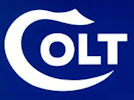
REVOLVERS
And Colt's Fall From Number One to Number Three
by Mark Freburg
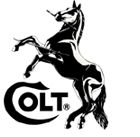 Colt ruled the handgun world during the latter 19th Century with the famous Model Colt 1873 Single Action Army, and in 1889 they invented the world's first double-action, swing-out cylinder revolver. Colt continued to lead in sales through the first half of the 20th Century, and in this case it was the primarily because of the Colt Army Special revolver, wisely renamed the Colt Official Police in 1927. By the late 1920s Colt fully realized that large-scale revolver sales to the military were over, and it was law enforcement that was buying these guns, thus the name change. This would last for decades to come, much to Colt's benefit. In the meantime, the Colt "OP" would ride in many police and security guard holsters as well as find popularity with private citizens. Official issue included agencies like NYPD, Boston PD, the FBI, and the Treasury Department.
Colt ruled the handgun world during the latter 19th Century with the famous Model Colt 1873 Single Action Army, and in 1889 they invented the world's first double-action, swing-out cylinder revolver. Colt continued to lead in sales through the first half of the 20th Century, and in this case it was the primarily because of the Colt Army Special revolver, wisely renamed the Colt Official Police in 1927. By the late 1920s Colt fully realized that large-scale revolver sales to the military were over, and it was law enforcement that was buying these guns, thus the name change. This would last for decades to come, much to Colt's benefit. In the meantime, the Colt "OP" would ride in many police and security guard holsters as well as find popularity with private citizens. Official issue included agencies like NYPD, Boston PD, the FBI, and the Treasury Department.
The Official Police was blued, and built with checkered walnut stocks with a silver-colored Colt logo, except from 1947 to 1954, when a wood lookalike plastic called Coltwood was used for stocks. Those had no logo, either. As a matter of interest, Coltwood had been invented and used during WWII on Colt Commando models built for the military. More on that later. OP Barrel lengths were 2", 4", 5", and 6". Sights were fixed. Pre-war guns had round front sights, while the post-war example in the following photo shows the slanted front sight that replaced them. There were other differences in the shapes of parts like hammers and triggers over the years, too.
[Post-war Colt Official Police]
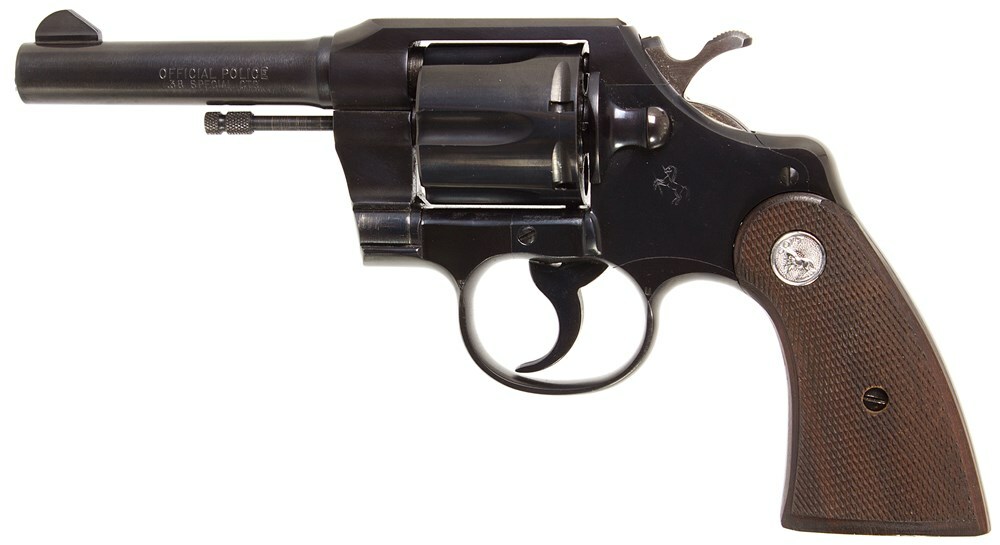
The Official Police was a medium-large frame, double-action revolver introduced in 1908 as, of course, the Army Special. It used what Colt internally referred to as their "41 size action," because the Army Special was originally built to chamber the .41 Long Colt cartridge. Frame sizes require some comment, as many call this revolver and its progeny a medium frame. Colt collectors call it that, but it's a bit larger than medium when considered by modern size standards. At the time, the .41 frame was the "medium" frame in the Colt line-up, and thus it became known as a medium frame. But think about the revolver world at large and you'll understand why I call this a medium-large frame. For you modern revolver fans who know about the S&W L-frame Model 686 and the Ruger GP100, consider that those are both known as medium-large frames ("intermediate frame" is also often used). The Official Police is about that size in terms of length, breadth, and trigger reach, thus my view that it should also be considered as medium large. If you think of the S&W Military & Police or Model 10 (K-frame) as a medium frame in the world of revolvers, this will make the various Colts built on the same frame as the Official Police easier to fit into the grand scheme of revolver sizes. I hope that makes it easier to understand why I call the Official Police frame a medium-large frame, and not a medium frame.
When Colt assigned model letters to their revolver frames after WWII, the Official Police became known as the E-frame. With a change to a frame-mounted firing pin it became the well-known I-frame. These frames are so similar that Colt collectors often refer to them as the "E&I" frames. When you talk Official Police today, collectors think E&I frame. They all sold very well for Colt.
Colt held this sales and popularity leadership position among revolver manufacturers all the way through WWII, despite the fine revolvers Smith & Wesson was also building in those days. S&W was yapping at Colt's heels, as they'd always been doing since the second half of the prior century, but Colt had the lead. But it wasn't just the Official Police, Colt 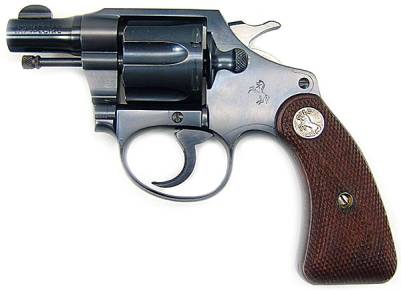 also kept the attention of both law enforcement and the public with other models. Their small-frame Colt Police Positive revolvers of 1905 (a modification of the original small frame Colt, the New Pocket) were very popular, even though chambered only for .32 Colt , .32 Colt New Police, or .38 New Police--note that these cartridges are the same as .32 S&W, S&W Long and .38 S&W with a different headstamp. Back in those days Colt didn't want the S&W name on their guns, and vice versa. These smaller Colts came in several barrel lengths including long barrel models as shown below. Why long barrels for such low power cartridges? In the early part of the century, these cartridges were still quite popular with police. A short barrel variant, the Colt Bankers Special (shown in inset above right), was popular for concealed carry. The Police Positive was never assigned a frame letter for identification, as the last revolvers of this size were discontinued in 1947 as frame letters were being adopted.
also kept the attention of both law enforcement and the public with other models. Their small-frame Colt Police Positive revolvers of 1905 (a modification of the original small frame Colt, the New Pocket) were very popular, even though chambered only for .32 Colt , .32 Colt New Police, or .38 New Police--note that these cartridges are the same as .32 S&W, S&W Long and .38 S&W with a different headstamp. Back in those days Colt didn't want the S&W name on their guns, and vice versa. These smaller Colts came in several barrel lengths including long barrel models as shown below. Why long barrels for such low power cartridges? In the early part of the century, these cartridges were still quite popular with police. A short barrel variant, the Colt Bankers Special (shown in inset above right), was popular for concealed carry. The Police Positive was never assigned a frame letter for identification, as the last revolvers of this size were discontinued in 1947 as frame letters were being adopted.
[Small-frame Colt Police Positive]
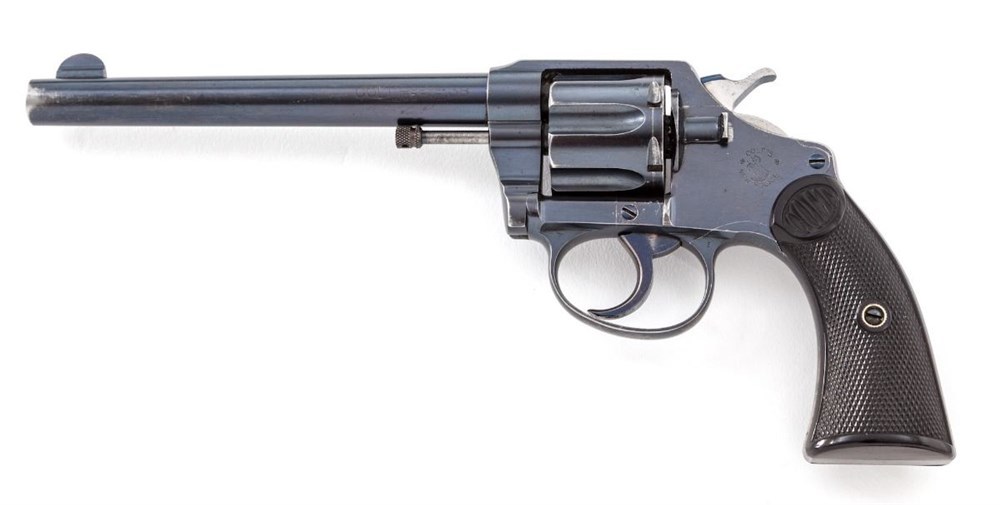
The lengthened version of the Police Positive, called the Police Positive Special and dating from 1908, allowed this small frame to chamber the .38 Special Cartridge. Made with a short barrel for the first time in 1927, this became the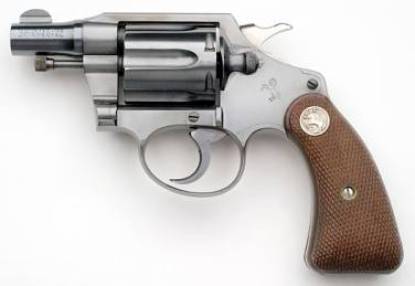 Colt Detective Special, one of the most popular and most famous Colts ever made, and not discontinued until 1995. Shown at right is a pre-war Detective Special.
Colt Detective Special, one of the most popular and most famous Colts ever made, and not discontinued until 1995. Shown at right is a pre-war Detective Special.
Another very popular model that kept Colt ahead of Smith & Wesson in the early days was the large-frame Colt New Service. Older than even the Army Special of 1908, it hearkens back to 1898. It was of course the model upon which Colt built their version of the famous WWI-era U.S. Model of 1917 chambered in .45ACP. Perhaps lesser known to the general public, the New Service was also adopted as a stopgap by the military in .45 Colt to replace the rather fragile 1890s-era Colt revolvers in .38 Long Colt that had failed our troops in The Philippines when we were fighting the fanatical Moros. This story has been sensationalized through the years by gun writers who just seem to want to champion a .45 caliber handgun over a .38 caliber handgun, when in truth it was the .30 U.S. Government rifle cartridge, known today as the .30-40 Krag that really put the drug-crazed Moro warriors down for the count. American troops didn't say "Civilize 'em with a Krag" for nothing. But I digress. The New Service was already in production, .45 Colt was already a factory chambering, and it would certainly do for the military until the upcoming new .45 pistol (the Model 1911) was finished and adopted, thus the Colt Model of 1909.
[Colt Model 1909 in .45 Colt]
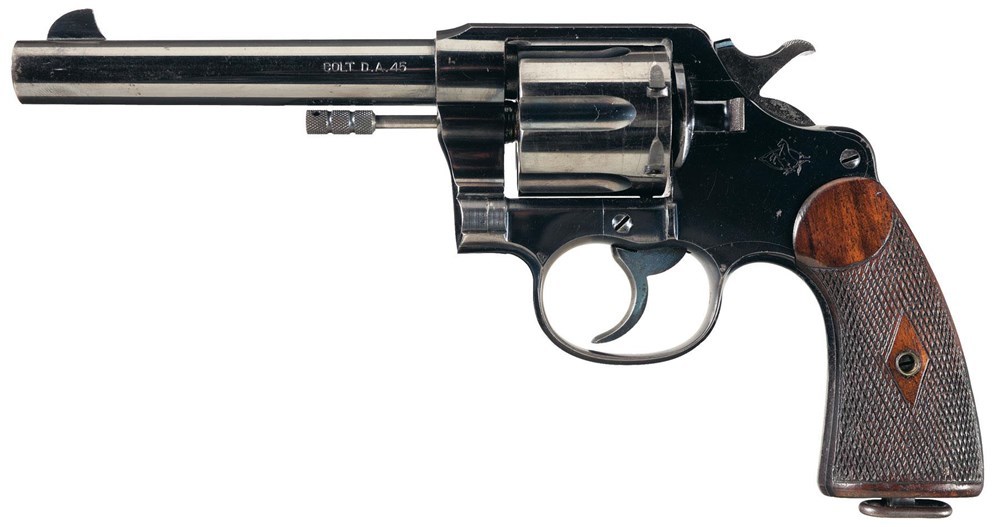
The New Service was never assigned a frame letter because it was discontinued in 1942. In the meantime, while the Official Police was more popular with police, and while many urban departments liked the smaller Police Positive or Police Positive Special, the New Service was popular with the various highway patrols, and was even standard issue to the U.S. Border Patrol for a time, who even in the 1930s regularly got into gunfights along the Mexican border. You can read about some of these in Charles Askin's biography where he discusses his time in the Border Patrol. Also, the New Service was also Colt's first vehicle for the .357 Magnum cartridge after it appeared in 1935. Back in those days both Smith & Wesson and Colt felt the first magnum belonged in a large frame revolver only.
[Large-frame commercial Colt New Service]

During WWII, a great demand for revolvers was placed upon both Colt and Smith & Wesson to augment the additional numbers of M1911A1 pistols the military suddenly required. S&W probably built the most because they were not building pistols, while Colt was building great numbers of M1911A1s. The government pulled many of the old Model of 1917 large frame revolvers from WWI out of storage, both Colt and S&W variants, and re-issued them to the troops, but that certainly didn't solve the need for more more guns. In addition to the demand for the big .45s there was great need for medium and small frame revolvers in .38 Special, as well as in .38 S&W (.38-200) for our British Commonwealth allies who also placed large orders. Specifically, S&W received orders from both the US military and from our allies for the S&W K-frame .38s, generally with 4" barrel, with a military Parkerized finish, for issue to everyone from (Navy) fighter pilots to civilian wartime plant guards. This was a great benefit to S&W, who was in a poor financial state leading up to the war due to the Great Depression. Colt, who hadn't been immune to the Depression either, likewise received orders for large numbers of revolvers in .38 Special, but produced fewer than S&W due to Colt's M1911A1 commitment. Again the revolvers would be issued to a diverse lot. These Government issue Colts included wartime versions of short-barreled Detective Specials, which had seen a change from square butt to round butt on the commercial side, but were returned to the original square butt for government issue and as government issue were referred to as Commando Specials. Or they might be Colt Commandos, a wartime version of the Official Police, as shown below. Many Colts would be issued to clandestine operators, from the OSS to SOE to the various military branch's own intelligence operators.
[2" and 4" barreled Colt Commandos with correct plastic "Coltwood" stocks]
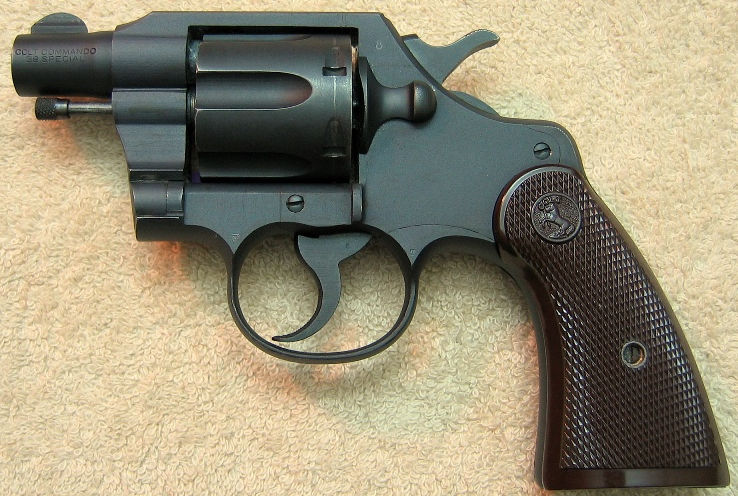
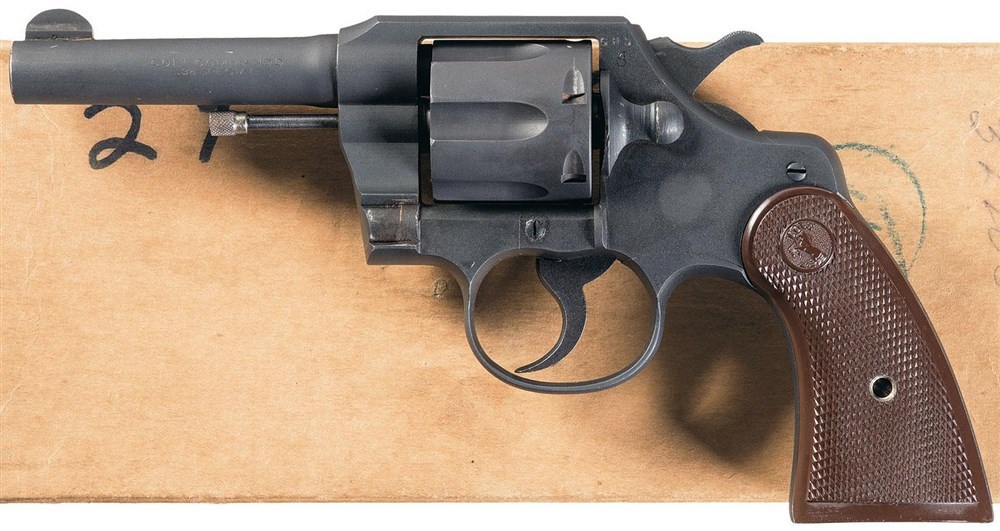
After the war the military contracts ended, and Colt went back to business as usual, likely expecting to continue as the revolver leader. At the same time Smith & Wesson hit a new stride in the late 1940s. S&W had recovered financially due to war income. They appointed a dynamic new president, Carl Hellstrom, in 1946. In 1950 they finally decided to compete with the Colt Detective Special. They introduced a new frame size, the J-frame, and a new model using it, called the Chief's Special, which held five rounds and was chambered for .38 Special cartridge. It replaced the old S&W I-frame, which was only capable of handling the anemic .38 S&W round. Colt had released their small Detective Special almost 25 years earlier, and it had become hugely popular, but the new Smith & Wesson was well-received. S&W had made the Chief's Special hold one round less than the Colt Detective Special, but that allowed it to be smaller. This smaller size appealed to a lot of cops and private citizens.
[Colt Detective Special from 1950, and below that, S&W Chief's Special from 1952)]
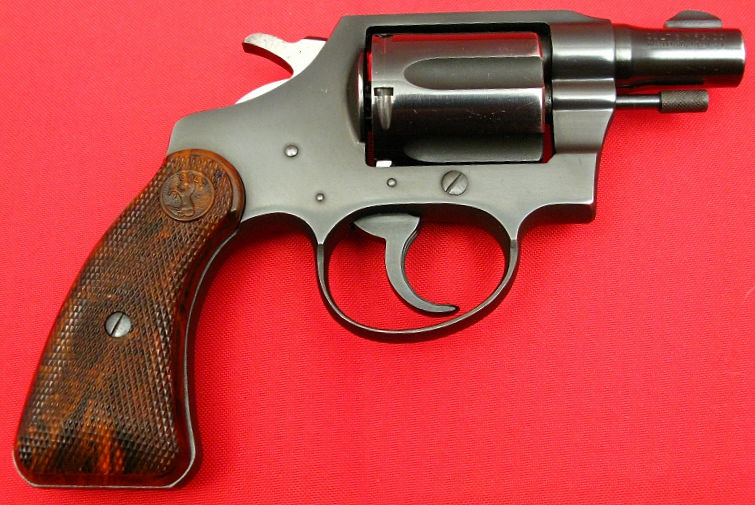
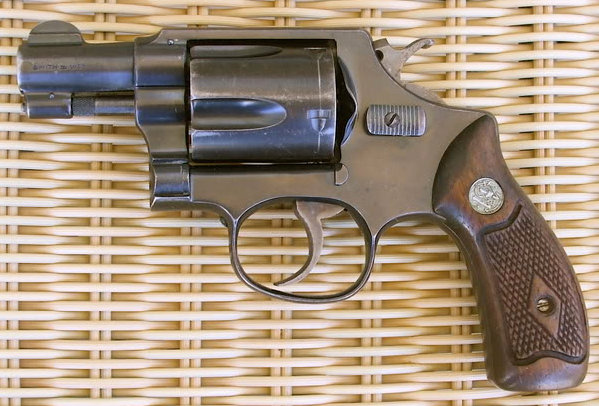
But S&W didn't sit still. Just a few years later S&W introduced the new Model 29 .44 Remington Magnum in their popular N-frame, or large frame revolver, said to be capable of hunting anything on the planet. Colt introduced the Colt Python in .357 Magnum the same year, but it did not chamber the awe-inspiring .44 Magnum, as it wasn't large enough, being built on the new I-frame. S&W's poor financial position relative to Colt before the war was turning around in the 1950s.
While Colt continued to introduce "new" models of DA revolver over the post-war and mid-century years, in the minds of the public they tended to be updates only, and the revolvers had similar names: Trooper, Trooper Mk.III, Trooper Mk.V. While these were actually good guns with significant improvements, it was hard to market excitement into what seemed a boringly routine release of models. And truth be told, quality was slipping a bit at Colt. S&W on the other hand kept breaking boundaries that allowed a lot of marketable hype, and inevitably they would introduce something new before Colt had anything in the same arena. The S&W K-frame (medium-frame) Model 19 .357 Magnum Combat Magnum, introduced in 1957, was probably the biggest thing S&W did during the mid-century--putting the vaunted .357 Magnum cartridge in a true medium-frame revolver. 1955's Colt Python .357 was larger than the Model 19, built on the I-frame of course, and intended as a super target revolver--not quite the "Peace Officer's Dream," as Bill Jordan referred to the Smith & Wesson Model 19. The deluxe Python did not allow Colt to catch up to S&W in sales, especially law enforcement sales. The Python, as fine a revolver as ever made in America (an exception to my comment on slipping quality), was just too refined and too expensive to be adopted by law enforcement for issue to the rank and file. The S&W Model 19 on the other hand became perhaps the most-issued .357 ever up to the 1980s. It got worse for Colt. In the early 1960s S&W broke new ground with the .41 Magnum, a cartridge that was supposed to be the big bore manstopper for police. That one didn't work out as planned, but the marketing sure kept Smith & Wesson on everyone's lips. In 1965 S&W came out with the first stainless steel handgun, the Model 60, a version of their Chief's Special. They couldn't build them fast enough. S&W was now firmly in the lead, and Colt was following them.
[4" Colt Python, and below the S&W Model 19 as issued to the Federal Bureau of Investigation]
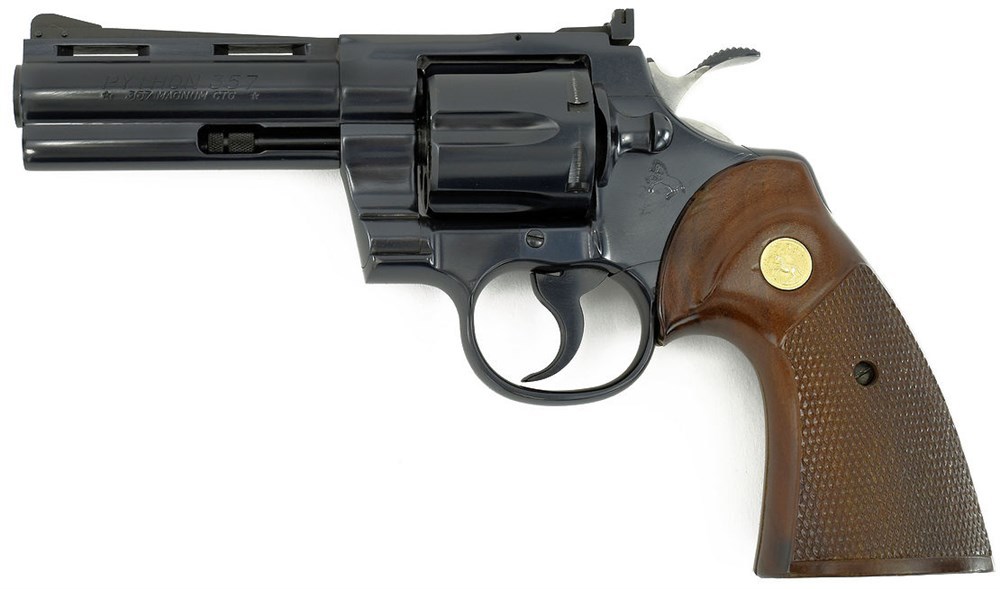
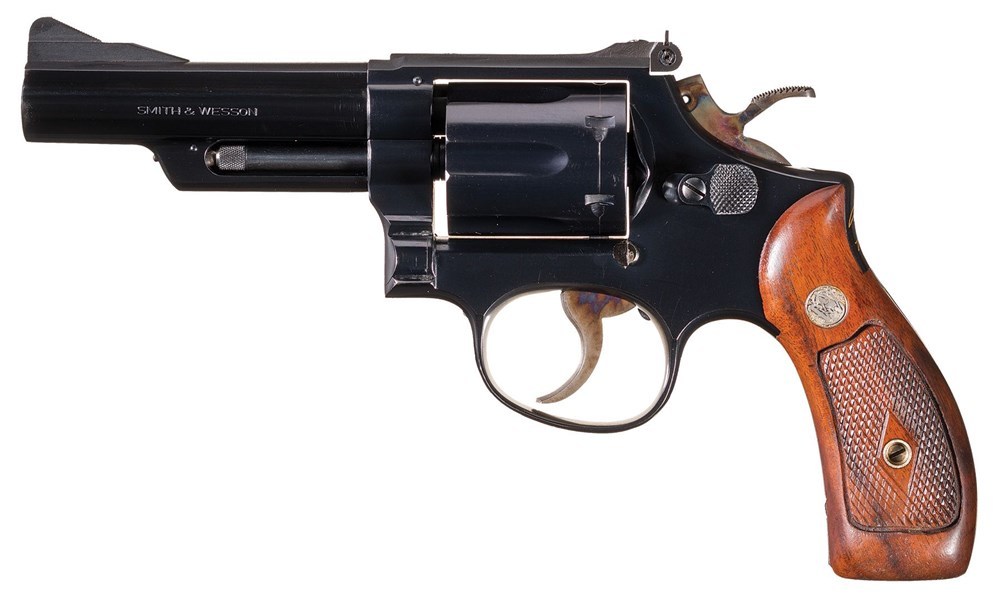
By the late 1960s Colt had found their quality down and their expenses rising and were forced to change the way they built revolvers. They began to use sintered metal parts. These were parts made of powdered metal and heat-treated to give them a hard, glass-smooth finish. Instead of a highly-skilled workman hand-fitting all the small parts on a revolver, a less-skilled technician could take a sintered metal part from a bin and see if it fit. If it didn't he'd grab a different part until he found one that fit perfectly. These parts came out fitting closely enough that this was a quick process. This actually was a smart way to build guns in the Mid-century economy, a less expensive way to build guns, but it wasn't something that made purists happy. Any time drop-in, sintered metal parts are used in gun-making, the whiners complain because, not understanding the process, they think the company is doing something "cheap." These same people will, of course, complain if the company raise prices on their firearms, and this has happened with Winchester, Colt, Smith & Wesson, and many other gun makers over the latter half of the 20th Century. But this allowed Colt to cut expenses greatly in the late 1960s. Yet Colt would face more competition coming up.
In 1972, after six years of development, Bill Ruger and two of his engineers finished work on an all-new DA revolver, and released the Ruger Security-six to the public. The Security-six was almost exactly the size of the S&W K-frame, was meant to compete with it, and did. It had innovative features such as no sideplate--the entire action dropped from the bottom of the frame, attached to the trigger guard assembly. Ruger pushed this as making the Ruger revolver very strong. It probably was, and is--they still make their DA revolvers the same way. Eventually the "Six-series" would include revolvers in three types, all built on the same frame: the Security-six with adjustable sights and a square butt, and barrel lengths of 2 3/4, 4, and 6"; the Police Service-six with fixed sights and a square butt, with barrel lengths of 2 3/4 or 4"; and the Speed-six with fixed sights and a round butt, and barrel lengths of 2 3/4 or 4". They all came in blue and eventually stainless, and calibers of .38 Special or 357 Magnum were standard. Some models were offered in 9mm. And they cost less than S&W and Colt. With that description of the Ruger line it should be no surprise that they became popular, especially with police departments and citizens on a budget. Of course by then a lot of law enforcement was firmly wedded to Smith & Wesson, who now had majority ownership of the police market, but Ruger's growing popularity probably seemed like a death blow to Colt's law enforcement revolver sales. S&W never relinquished their sales and popularity lead to Ruger, but Ruger moved steadily forward to overtake Colt, and eventually the sales ranking was Smith & Wesson, Ruger, Colt.
[Ruger Security-six]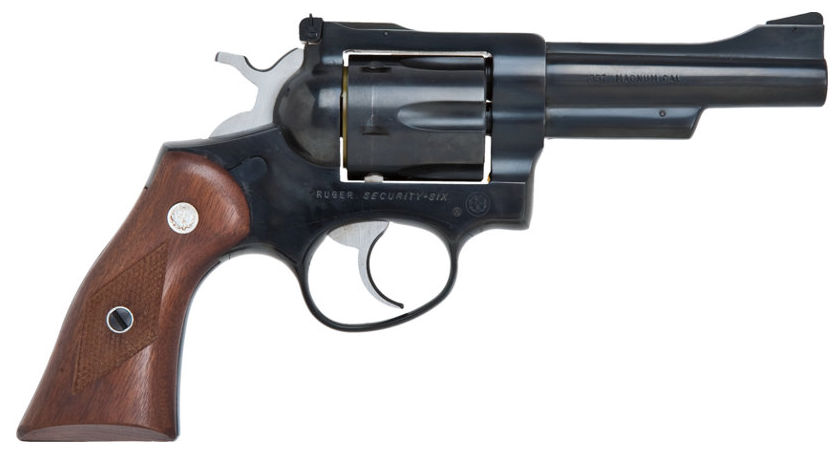
During the early 1980s police had began qualifying with the .357 Magnum ammunition they 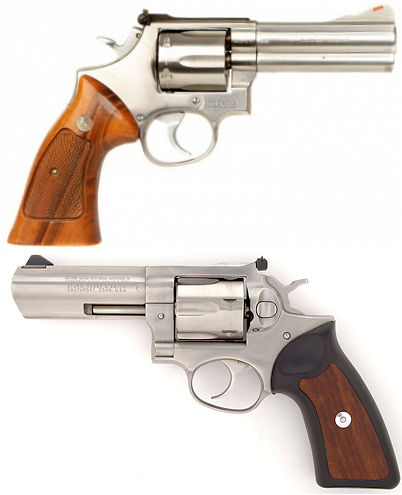 carried on the street and stopped substituting .38 Specials for practice. This began beating up the Smith & Wesson medium frame (K-frame) magnums in common use, so S&W introduced a beefier, medium-large frame model on their new L-frame, called the Model 586/686 (blued/stainless), introduced in 1981. While Ruger reportedly had less of a problem in this regard, due to S&W's hard-sell marketing, Ruger followed suit and introduced their own medium-large frame revolver, the GP100, in 1985. A marketing war ensued between S&W and Ruger as to which was the best new magnum revolver. (shown at right: S&W 686, top, Ruger GP100, bottom). But it's often forgotten that Colt also introduced their King Cobra in 1986 to try for a piece of this same pie. Sadly, Colt lost this marketing war.
carried on the street and stopped substituting .38 Specials for practice. This began beating up the Smith & Wesson medium frame (K-frame) magnums in common use, so S&W introduced a beefier, medium-large frame model on their new L-frame, called the Model 586/686 (blued/stainless), introduced in 1981. While Ruger reportedly had less of a problem in this regard, due to S&W's hard-sell marketing, Ruger followed suit and introduced their own medium-large frame revolver, the GP100, in 1985. A marketing war ensued between S&W and Ruger as to which was the best new magnum revolver. (shown at right: S&W 686, top, Ruger GP100, bottom). But it's often forgotten that Colt also introduced their King Cobra in 1986 to try for a piece of this same pie. Sadly, Colt lost this marketing war.
Let's examine the King Cobra. It was built on what Colt called the AA-frame, just a stainless steel V-frame, which was an upgraded Mk III frame, which if you trace it back you will find was the J-frame, which in turn was an E&I frame in size. The AA/Mk V was exceptionally strong and very suited to a full diet of .357 Magnum ammo, but in the public mind the fight was between S&W and Ruger. Was it that the public didn't think Colt offered anything new? Significantly modified in function, heat-treated differently, beefed up compared to the original Official Police--but the King Cobra wasn't really new in size, since it was the ancient .41 frame, Colt actually already had a medium-large frame, as I discussed in the opening. They didn't really need to create an all-new frame. But you can't convince consumers of this. We thrive on "new." New sells. Colt had been building lots of police revolvers on essentially this frame, as noted--with modifications--for decades. The Colt .357 Magnum appeared in 1953. The Colt Trooper in .357 Magnum appeared in 1961. Both of these were beefed up, nice revolvers--especially 1953's elegant .357 Magnum model, built as a premium model with checkered walnut stocks and adjustable Accro sights, and only outclassed by the Python. But S&W and Ruger had built "all-new beefy" revolvers, made just to handle extensive magnum use. They had to be better than something essentially "old," right? So Americans chose, and the King Cobra was not the Chosen One. This isn't to say the King Cobra didn't sell, it just didn't sell in anything like S&W or Ruger numbers--which, by the way, are still being sold today, while the King Cobra was discontinued in 1992, after only six years on the market.
[Colt King Cobra]
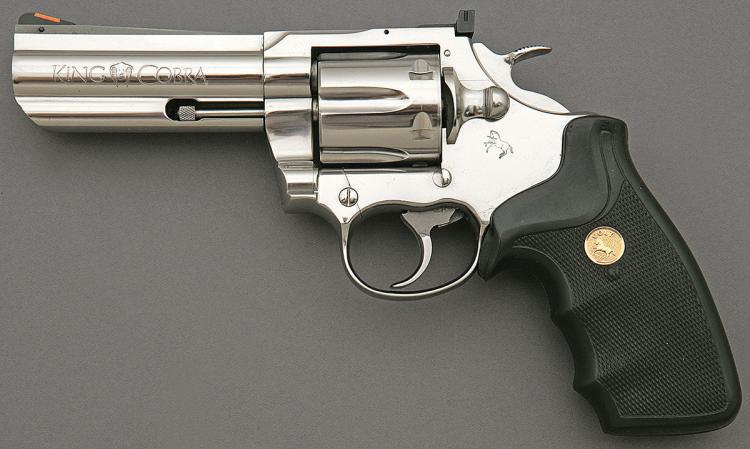
By the time law enforcement began to move away from DA revolvers to 9mm DA semi-automatics en masse, Colt was so far out of the running they couldn't even see S&W or Ruger up ahead. From the number one DA revolver company in pre-war America, Colt eventually ended up as number three long before semi-automatic pistols signaled the demise of the DA revolver as the number one fighting weapon on these shores. And that's our story.
~~~~~~ Epilogue ~~~~~~
As one who really loves the old Colt revolvers, I am heartened by Colt making revolvers again in the 21st Century. I'm not crazy about the exclusive use of stainless steel by a company who built some beautifully blued guns way back when. Nor do I care for Colt's use of fiber optic front sights--though they are now offering some variety, like brass beads, after a couple years, so maybe there is hope that they realize not all eyes work well with florescent sights. In the meantime, well-loved guns last longer than people, and there are still some great old Colt revolvers out there to be acquired and loved. From the Army Special to the Police Positives the pre-war guns are great. And f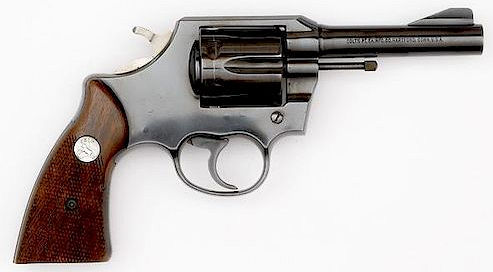 or what it's worth, even though Colt had lost the number one spot after WWII, even their post-war revolvers are very nice guns and certainly worth a look whether you are a shooter or a collector, or a little of both. And not just the famous Python, or the Diamondback, or Detective Special models. The Colt Official Police itself, daddy of them all, was not discontinued until 1969, a model lifespan of 61 years. It was replaced by the Official Police Mk III which was produced for another nine years until 1978. The Official Police Mk III (shown nearby) was a modern revolver based on the Mk III platform, using all the improvements, including the transfer bar system which had replaced the old E&I frame, but in external form it was still much like the Army Special/Official Police Colt had been making since 1907. What that means is that particular revolver is both common and available in one or another form. And there are many Trooper and Lawman models of various marks from the post-war years out there as well.
or what it's worth, even though Colt had lost the number one spot after WWII, even their post-war revolvers are very nice guns and certainly worth a look whether you are a shooter or a collector, or a little of both. And not just the famous Python, or the Diamondback, or Detective Special models. The Colt Official Police itself, daddy of them all, was not discontinued until 1969, a model lifespan of 61 years. It was replaced by the Official Police Mk III which was produced for another nine years until 1978. The Official Police Mk III (shown nearby) was a modern revolver based on the Mk III platform, using all the improvements, including the transfer bar system which had replaced the old E&I frame, but in external form it was still much like the Army Special/Official Police Colt had been making since 1907. What that means is that particular revolver is both common and available in one or another form. And there are many Trooper and Lawman models of various marks from the post-war years out there as well.
As a final thought, it is a bit ironic that used prices on Colt revolvers have risen dramatically in recent recent years, which does neither the Colt company nor the casual consumer any good. 
(Please address any comments or corrections to me on this forum's message board. Thank-you.)
[Colt Trooper Mk.V]
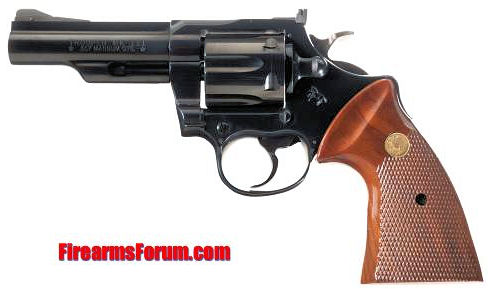
Sources included:
https://en.wikipedia.org/wiki/Smith_%26_Wesson_Model_586
https://en.wikipedia.org/wiki/Ruger_Security-Six
http://www.coltfever.com/Colt_Model_Guide.html
http://proofhouse.com/colt/
The History of Smith & Wesson, by Roy G. Jinks, 1977

MarkFreburg
Uploaded: 3/3/2019

